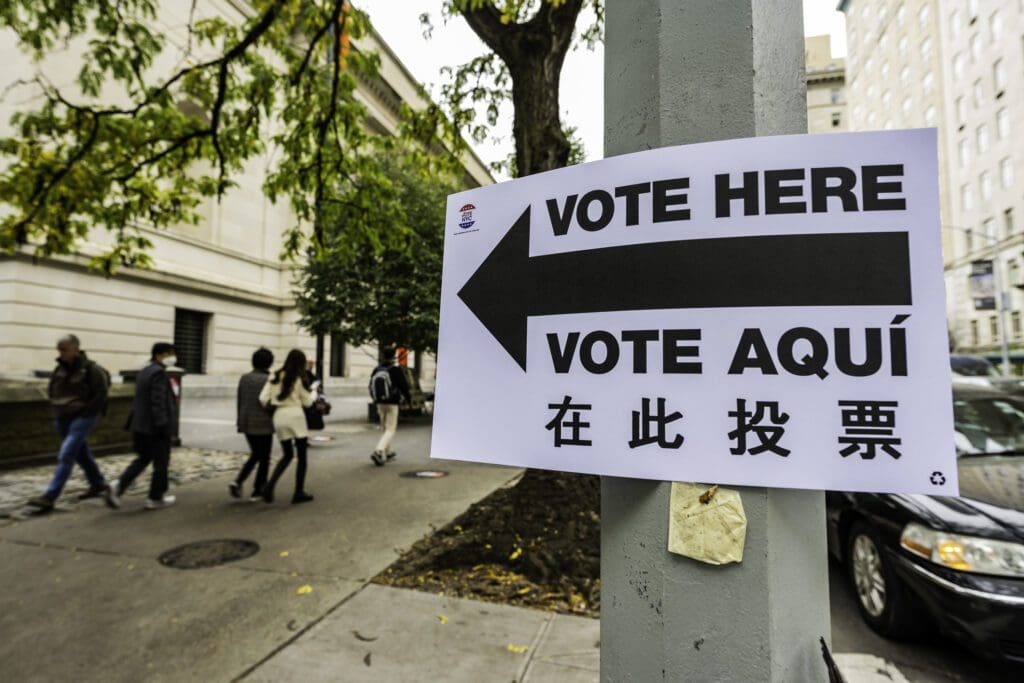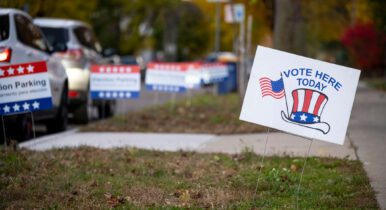How to Make 2024 a Great Year For Field Organizing


So now we know. Joe Biden will take on Donald Trump once again, in a presidential matchup Americans apparently await with the same enthusiasm they might bring to an emergency colonoscopy. Assuming that the electorate’s late-winter discontent sticks around for another eight months, how can campaigns get people to turn out for an election most would rather avoid?
For down-ballot candidates, a normal presidential year can cut both ways. Yes, many more voters will turn out than in an off-year election, particularly in states deemed battlegrounds by the strategists-that-be. In those areas, state and local campaigns may rise or fall based on factors largely beyond their control, including the quality and quantity of GOTV investment from the national campaigns, from independent-expenditure groups or from the state party.
Campaigns outside the battlegrounds will have to do much of the turnout work themselves, unless they happen to enjoy high-functioning state parties or allies. Few local campaigns will be able to count on much in the way of media coverage, since the presidential and congressional races will suck up most of the attention. Even ad placement may be a problem, particularly for campaigns without the early budget to reserve TV space well in advance of the big guys.
If this were the year 2000, down-ballot candidates might be in a bit of a pickle. But in 2024, campaigns can enjoy the benefits of a quarter century of tactical and technical GOTV innovation — particularly if they start early.
Recruit Volunteers Now
For many campaigns, field outreach has been a voting-season activity. Organizers and volunteers have often had to wait until early voting was on the horizon or actually under way to start knocking on doors and making phone calls. But Joe Biden’s campaign was holding volunteer trainings for its grassroots mobile app last fall, a year before Election Day. Why? Because field organizing typically rewards an early start.
For one thing, a month before Election Day is too late to effectively canvass voters to identify allies or persuadables by talking to them, leaving campaigns to rely on data that may or may not reflect a voter’s current reality. Likewise, training volunteers and getting them comfortable reaching out to friends and strangers can take up time that’s always in short supply late in a campaign.
By recruiting volunteers early, a campaign has a longer window in which to collect and train them, and it also has a longer window in which to get them to connect with friends and family. With the airwaves and digital channels likely to be choked with ads this year, priority voters may end up tuning out our messaging by choice, particularly since they’re often politically less engaged than the average person. Otherwise, they wouldn’t need an extra nudge to go to the polls in the first place.
In that case, a message or call from someone they already know may be the only thing that can cut through the communications clutter. If volunteers can start months before the election, when voters are less overwhelmed by the political barrage, they’ll have more opportunities to reach targeted voters and more time to persuade them.
Pick Your Technology Soon
Kicking off your field campaign early also forces you to choose grassroots technology, since you’ll want people using the system now that you’ll depend on in the fall. Nowadays, campaigns can choose from a host of apps, including:
- Automation tools, to streamline the process of onboarding new supporters, putting them in touch with organizers and moving them down the road to giving money and/or time.
- Canvassing apps, to help staff and volunteers go to the right doors with the right messages and collect the right data.
- Relational organizing tools, to leverage personal connections to help organize volunteers, connect with donors or reach voters through people they trust.
- Peer-to-peer texting apps, for internal communications as well as outreach to donors, supporters and targeted voters.
- Artificial intelligence, to parse data and to help crank out the scripts, texts, deepfakes and everything else required by all of the above, plus the fundraising emails to pay for it.
Naturally, most of these technologies have a learning curve, and staff and volunteers will benefit from extra days or months figuring out how to get the most value out of them. Also, you may find that your first choice in organizing tools doesn’t work out as well as planned, leaving you to scramble for a replacement. That process would almost certainly be smoother this summer than it would be three weeks before the election.
Of course, field isn’t the only campaign priority that benefits from an early start. Digital advertising can help recruit supporters and build name recognition long before Election Day, for example, and it may cost less today than in the October rush. But the benefits of field organizing tend to accumulate the longer an outreach campaign goes on, unlike TV advertising for instance, whose effects can start to fade if the ads take even a brief pause.
Assuming the pollsters are right, 2024 will be a close year at the national level, with control of the White House and Congress coming down to a relative handful of counties scattered across the country. In these circumstances, down-ballot candidates may or may not see much benefit from Biden’s field operation or Trump’s new team at the RNC. One thing they can control? The resources and energy they put into grassroots organizing. My advice? Start now if you can. Time is finite, after all, no matter what elected office you choose to seek.
Colin Delany is founder and editor of the award-winning website Epolitics.com, author of “How to Use the Internet to Change the World – and Win Elections,” a veteran of more than twenty-seven years in digital politics and a perpetual skeptic. See something interesting? Send him a pitch at cpd@epolitics.com.


